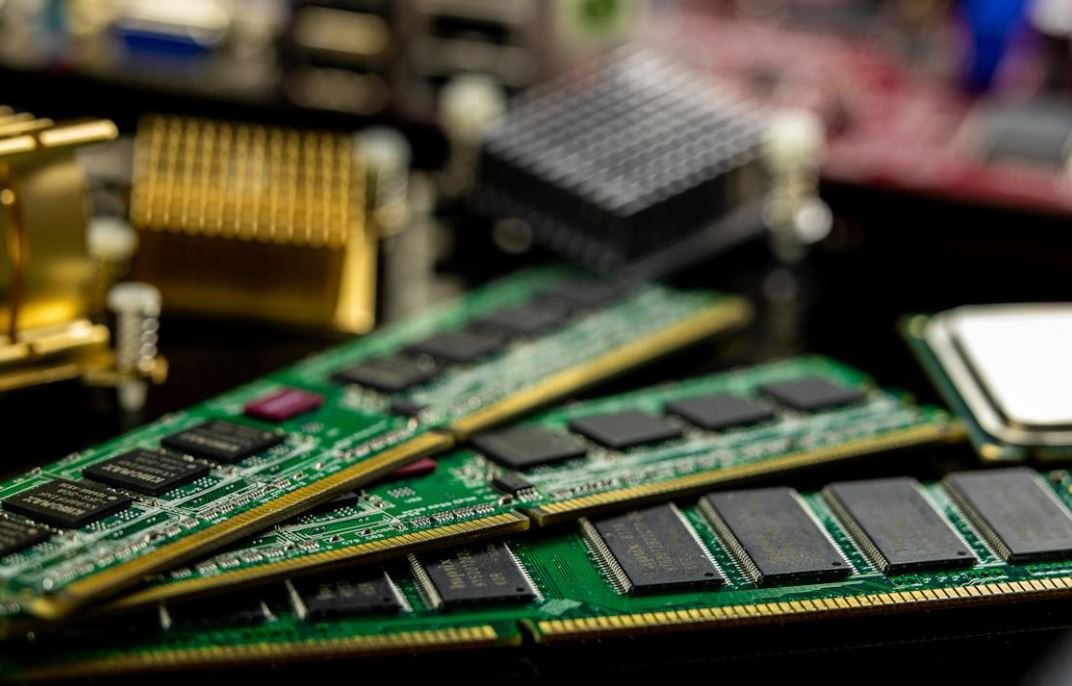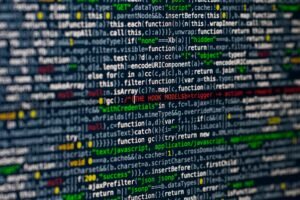AI versus Machine Learning
Artificial intelligence (AI) and machine learning (ML) are two closely related concepts that are often used interchangeably. However, they are distinct technologies with their own applications and capabilities. Understanding the differences between AI and ML is essential for businesses and individuals looking to harness the power of these technologies effectively.
Key Takeaways:
- AI and ML are distinct technologies that have different applications and capabilities.
- AI refers to systems that can perform tasks that typically require human intelligence, while ML is a subset of AI that focuses on enabling machines to learn from data and improve their performance over time.
- AI can encompass a wide range of technologies, including ML, but not all AI systems rely on ML.
- Both AI and ML have vast potential in various industries, including healthcare, finance, and transportation.
Artificial intelligence refers to systems or machines that can perform tasks that usually require human intelligence. These tasks may include visual perception, speech recognition, decision-making, and natural language understanding. AI systems can be rule-based (following predefined rules) or learning-based (improving their performance through data analysis).
*Machine learning (ML), on the other hand, focuses on enabling machines to learn from data and improve their performance over time without being explicitly programmed.* This subset of AI involves algorithms that allow computers to analyze data, identify patterns, and make predictions or decisions. **Rather than following explicit instructions, ML algorithms learn from historical data to make inferences and predictions.**
While AI is a broader concept that includes various technologies, machine learning is just one approach to achieving AI capabilities. Other technologies within the AI spectrum include expert systems, natural language processing, and computer vision. On the other hand, *ML algorithms are the core of many AI applications, allowing machines to learn from vast amounts of data and perform complex tasks.*
The Relationship between AI and Machine Learning
The relationship between AI and machine learning is often described as a “subset and superset relationship.” AI is the broader concept, encompassing various technologies aiming to mimic human intelligence to some extent. Machine learning is a subset of AI that focuses on the development of algorithms that allow machines to learn from data and make predictions or decisions without explicit programming.
Machine learning is considered a crucial component of many AI systems, as it enables machines to improve their performance and behavior over time. Deep learning, a type of machine learning, has gained significant attention in recent years for its ability to automatically learn hierarchical representations of data, leading to breakthroughs in fields such as image recognition and natural language processing.
Applications of AI and Machine Learning
AI and machine learning have vast potential in various industries, revolutionizing the way businesses operate and transforming numerous aspects of our daily lives. Here are some key application areas:
- Healthcare: AI and ML techniques are being employed to diagnose diseases, analyze medical images, develop personalized treatment plans, and predict patient outcomes.
- Finance: AI is transforming the finance sector by automating processes, detecting fraud, predicting market trends, and providing personalized investment advice.
- Transportation: Self-driving cars and autonomous drones rely on AI and ML technologies to perceive their environment, make decisions, and navigate safely.
- Customer Service: AI-powered chatbots and virtual assistants are revolutionizing customer service by providing quick, personalized responses and automating mundane tasks.
Table 1: AI and Machine Learning Comparison
| Artificial Intelligence (AI) | Machine Learning (ML) | |
|---|---|---|
| Definition | A field of computer science that aims to create machines or systems that can perform tasks requiring human intelligence. | A subset of AI that focuses on enabling machines to learn from data and improve their performance over time. |
| Approach | Can be rule-based or learning-based. | Primarily focuses on learning from data. |
| Core Technology | Includes machine learning, expert systems, natural language processing, and more. | Relies on algorithms and statistical techniques to learn from data. |
| Example | Virtual personal assistants, image recognition systems, autonomous robots. | Recommendation systems, fraud detection algorithms, self-driving cars. |
Capturing the full potential of AI and ML requires a combination of a robust technical foundation, appropriate data infrastructure, and a thorough understanding of the specific problem or application. Technologies that incorporate AI and machine learning are continuously evolving, and businesses need to adapt and innovate to stay ahead in this rapidly changing landscape.
Table 2: Applications of AI and Machine Learning
| AI Applications | ML Applications | |
|---|---|---|
| Healthcare | Disease diagnosis, medical image analysis, personalized treatment plans. | Patient outcome prediction, drug discovery, genomics. |
| Finance | Fraud detection, trading algorithms, customer sentiment analysis. | Market trend prediction, credit scoring, algorithmic trading. |
| Transportation | Self-driving cars, route optimization, traffic prediction. | Computer vision for object detection and tracking, motion planning. |
| Customer Service | Chatbots, virtual assistants, sentiment analysis. | Automated email response, customer behavior analysis, recommendation systems. |
As AI and ML continue to advance, their impact on society and business will undoubtedly grow. With the potential to make processes more efficient, improve decision-making, and unlock new insights, the integration of AI and ML technologies is poised to shape our future in profound ways.
Table 3: AI and Machine Learning Potential
| AI | ML | |
|---|---|---|
| Potential | Automating tasks requiring human intelligence, transforming industries, reshaping the workforce. | Enhancing accuracy and efficiency in decision-making, driving innovation, enabling personalized experiences. |
| Challenges | Ethical considerations, job displacement, data privacy, reliable performance. | Data quality, bias and fairness, interpretability, scalability. |
Embracing AI and ML technologies is crucial for organizations seeking to remain competitive in today’s rapidly evolving digital landscape. By adopting these technologies, businesses can unlock new insights, automate processes, and deliver more personalized and efficient experiences to their customers.

Common Misconceptions
When it comes to discussing AI versus Machine Learning, there are several common misconceptions that people often have. These misconceptions can lead to misunderstandings and a lack of understanding about the capabilities and limitations of these technologies. It’s important to address these misconceptions to have a more accurate understanding of AI and Machine Learning.
Misconception #1: AI and Machine Learning are the same thing
- AI refers to the broader concept of creating intelligent machines, whereas Machine Learning is a subset of AI.
- AI includes various techniques and methodologies such as natural language processing and computer vision, while Machine Learning emphasizes on training algorithms to learn and make predictions.
- In summary, AI encompasses a range of technologies beyond just Machine Learning.
Misconception #2: AI and Machine Learning can replace human intelligence
- AI and Machine Learning are powerful tools that can automate certain tasks and make predictions, but they cannot replicate human intelligence in its entirety.
- Human intelligence involves complex skills such as critical thinking, creativity, and emotional intelligence, which AI and Machine Learning algorithms lack.
- AI and Machine Learning are designed to complement human abilities and enhance human decision-making, rather than completely replacing it.
Misconception #3: AI and Machine Learning always make accurate predictions
- While AI and Machine Learning algorithms can deliver impressive results, they are not infallible and can make mistakes.
- The accuracy of predictions and decisions made by AI and Machine Learning models largely depends on the quality and quantity of training data provided to them.
- It’s important to continuously monitor and improve these algorithms to ensure that they provide reliable and trustworthy predictions.
Misconception #4: AI and Machine Learning are only beneficial in high-tech industries
- AI and Machine Learning have applications in various fields, from healthcare and finance to agriculture and transportation.
- These technologies can be used to optimize processes, improve efficiency, and generate insights in almost any industry.
- Even small businesses can benefit from implementing AI and Machine Learning solutions to enhance their operations and better serve their customers.
Misconception #5: AI and Machine Learning are only relevant for the future
- AI and Machine Learning are already widely used in today’s society, from virtual assistants on our smartphones to personalized product recommendations on e-commerce websites.
- These technologies are continuously evolving and being integrated into various applications and products.
- AI and Machine Learning will continue to have an increasingly significant impact on our lives, but they are already very relevant today.

The Growth of Artificial Intelligence and Machine Learning
As technology continues to advance at a rapid pace, the fields of Artificial Intelligence (AI) and Machine Learning (ML) have gained significant attention and popularity. AI refers to the creation of intelligent machines that can perform tasks typically requiring human intelligence, while ML focuses on the development of algorithms and statistical models that enable computers to learn and improve from experience.
Table 1: AI in Various Industries
AI has found its applications in numerous different industries, transforming the way we live and work.
| Industry | AI Application |
|---|---|
| Healthcare | Diagnosis and treatment assistance |
| Finance | Fraud detection and algorithmic trading |
| Transportation | Autonomous vehicles and traffic optimization |
| Retail | Predictive analytics and personalized marketing |
Table 2: Machine Learning Algorithms
Machine Learning utilizes various algorithms to facilitate learning and decision-making processes.
| Algorithm | Use Case |
|---|---|
| Linear Regression | Predicting sales based on historical data |
| Decision Trees | Classifying customer demographics for targeted advertising |
| Random Forests | Stock market trend prediction |
| Support Vector Machines | Image and text classification |
Table 3: AI versus Machine Learning
This table highlights the distinctions between AI and Machine Learning.
| AI | Machine Learning |
|---|---|
| Focuses on creating intelligent machines | Focuses on developing algorithms for learning from data |
| Requires elaborate programming and rule-based systems | Relies on statistical models and data feeding |
| Capable of reasoning, problem-solving, and decision-making | Facilitates learning and prediction based on patterns |
Table 4: AI and ML Pioneers
The field of AI and ML owes significant contributions to these pioneers.
| AI Pioneers | ML Pioneers |
|---|---|
| Alan Turing | Arthur Samuel |
| John McCarthy | Geoffrey Hinton |
| Marvin Minsky | Yoshua Bengio |
| Elon Musk | Andrew Ng |
Table 5: Impacts of AI and ML
The influence of AI and ML has been felt across various aspects of our lives.
| Domain | Impacts |
|---|---|
| Education | Personalized learning and intelligent tutoring systems |
| Entertainment | Recommendation systems for customized content |
| Manufacturing | Robotic process automation and quality control |
| Security | Crime prediction and threat detection |
Table 6: Potential Ethical Concerns
Advancements in AI and ML raise important ethical considerations to address.
| Ethical Concerns | AI Implications |
|---|---|
| Job displacement | Automation of workforce may impact employment rates |
| Privacy invasion | Collection and analysis of personal data may compromise privacy |
| Bias and discrimination | Unconscious biases in algorithms may perpetuate inequality |
| Autonomous weapon systems | Moral and legal implications of AI-powered weaponry |
Table 7: AI and ML in Pop Culture
The influence of AI and ML is prevalent in movies, books, and music.
| Pop Culture Reference | AI/ML Element |
|---|---|
| “Blade Runner” (1982) | Artificial humans known as “replicants” |
| “The Matrix” (1999) | Simulated reality and intelligent machines |
| “Ex Machina” (2014) | Humanoid robot with advanced AI capabilities |
| “I, Robot” (2004) | Interactions between AI and humans |
Table 8: AI and ML Misconceptions
There are common misconceptions and myths surrounding AI and ML.
| Misconception | Reality |
|---|---|
| AI will surpass human intelligence | AI remains limited to specific tasks and lacks general intelligence |
| ML algorithms always make unbiased decisions | ML algorithms can inherit biases from training data or design |
| AI and ML will inevitably cause job loss | While transformation is inevitable, new opportunities will emerge |
| AI and ML are only for large corporations | AI and ML technologies are becoming more accessible to all |
Table 9: Future Directions for AI and ML
The future of AI and ML holds exciting possibilities and directions.
| Future Direction | Potential Impact |
|---|---|
| Explainable AI | Gaining insights into AI decision-making processes |
| Reinforcement Learning | Enhanced training of autonomous agents through rewards |
| AI-powered healthcare | Improved diagnostics and personalized treatment |
| AI-driven sustainability | Efficient resource management and environmental conservation |
Table 10: AI and ML Collaboration
AI and ML intersect and complement each other in various applications.
| AI-Machine Learning Collaboration | Application |
|---|---|
| Deep Learning | Voice and image recognition |
| Neural Networks | Pattern detection and self-driving cars |
| Natural Language Processing | Chatbots and language translation |
| Robotics | Humanoid companions and industrial automation |
In this era of unique technological advancements, the ongoing competition between Artificial Intelligence (AI) and Machine Learning (ML) has sparked vital discussions about the future of automation and intelligent systems. Through a fruitful exploration of various industries, pioneering figures, misconceptions, and potential ethical concerns, it becomes evident that both AI and ML offer remarkable potential to revolutionize our lives. While AI focuses on creating advanced intelligent systems capable of human-like decision making, ML concentrates on developing algorithms that enable machines to learn from data and improve their performance. From healthcare and finance to entertainment and manufacturing, the impact of AI and ML is widespread and diverse. It is essential to address ethical concerns such as job displacement, privacy invasion, bias, and autonomous weapon systems, ensuring responsible and fair utilization of these technologies. Furthermore, AI and ML have permeated pop culture, becoming a recurring theme in movies, books, and music. By dispelling common misconceptions, harnessing the future directions of AI and ML, and embracing the collaborative nature of these fields, we can navigate this evolving technological landscape and unlock the tremendous potential that awaits.
Frequently Asked Questions
What is the difference between AI and Machine Learning?
Artificial Intelligence (AI) is a broad field of computer science that aims to create intelligent machines capable of mimicking human intelligence. Machine Learning, on the other hand, is a subset of AI that focuses on enabling machines to learn from data and improve their performance without being explicitly programmed.
How does AI work?
AI systems work by utilizing various algorithms and models to analyze data, identify patterns, make decisions, and generate human-like responses. These algorithms can be rule-based, statistical, or neural network-based, depending on the specific AI application.
What is Machine Learning?
Machine Learning is a branch of AI that involves training models on large datasets to learn patterns and make predictions or decisions without being explicitly programmed. It utilizes algorithms such as regression, classification, clustering, and reinforcement learning to extract insights and create predictive models.
Do all AI systems use Machine Learning?
No, not all AI systems use Machine Learning. While Machine Learning is a popular approach in AI, there are other techniques like expert systems, knowledge representation, and natural language processing that can be used in AI systems.
What are the key benefits of AI?
AI offers several benefits, including automation of repetitive tasks, improved efficiency and accuracy, enhanced decision-making capabilities, personalized user experiences, and the ability to analyze and process vast amounts of data quickly.
What are the limitations of Machine Learning?
Machine Learning has certain limitations, such as the need for large labeled datasets for training, the black-box nature of certain models, sensitivity to biased or incomplete data, and the inability to handle complexity beyond the scope of the training data.
Are AI and Machine Learning the same as human intelligence?
No, AI and Machine Learning seek to replicate certain aspects of human intelligence but are not equivalent to human intelligence. They lack qualities such as consciousness, self-awareness, and understanding of emotions.
How is AI being used in various industries?
AI is being used across multiple industries, including healthcare, finance, retail, manufacturing, transportation, and entertainment. It is utilized for tasks such as diagnosing medical conditions, detecting fraud, optimizing supply chains, autonomous driving, and creating personalized recommendations.
What ethical considerations arise from AI and Machine Learning?
AI and Machine Learning raise ethical concerns related to privacy, transparency, bias, accountability, and employment. Issues such as data privacy, algorithmic bias, and the potential displacement of human jobs require careful consideration and regulation.
Can AI and Machine Learning be used for malicious purposes?
Like any technology, AI and Machine Learning can be misused for malicious purposes. They can potentially be used for creating deepfake videos, cyberattacks, misinformation campaigns, and autonomous weapons. It is important to establish ethical guidelines and regulations to prevent such abuses.




